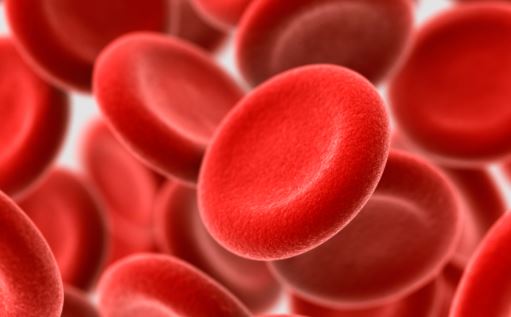Study reveals how standing up more could add years to your life
06/27/2025 / By Ava Grace

- Prolonged sitting harms cardiovascular health, increasing risks of heart failure, irregular heartbeat and premature death, even for those who exercise regularly.
- A landmark study of 90,000 U.K. adults found that sitting over 10.6 hours daily raises heart failure risk by 45 percent and cardiovascular death risk by 62 percent, regardless of exercise habits.
- Sitting slows circulation, stiffens arteries and weakens metabolism, leading to insulin resistance, inflammation and accelerated cellular aging – issues not fully reversed by exercise alone.
- Simple strategies like standing every hour, walking after meals and using a step tracker can significantly reduce risks; replacing 30 minutes of sitting with movement cuts heart failure risk by seven percent.
- Modern sedentary lifestyles have created a hidden health crisis, but small, consistent changes – standing more and moving frequently v can dramatically improve long-term heart health.
Modern life is built for convenience – desks, cars and screens dominate daily routines, keeping people seated for hours. But this seemingly harmless habit is quietly damaging cardiovascular health, increasing risks for heart failure, irregular heartbeat and even premature death. New research confirms that even regular exercise cannot fully counteract the harm caused by prolonged sitting. The solution? Frequent movement throughout the day – not just scheduled workouts – is essential for protecting the heart.
Landmark study reveals hidden dangers of sitting
A groundbreaking study published in the Journal of the American College of Cardiology analyzed data from nearly 90,000 middle-aged and older adults in the U.K., uncovering alarming connections between sedentary behavior and heart disease. The findings challenge conventional wisdom, proving that gym sessions alone won’t save those who spend most of their day sitting. (Related: The silent threat of a sedentary lifestyle: Why sitting too much could be killing you.)
Researchers tracked participants using wrist-based activity monitors, eliminating the inaccuracies of self-reported data. Over eight years, they found that those sitting more than 10.6 hours daily had a 45 percent higher risk of heart failure and a 62 percent higher risk of cardiovascular death compared to those sitting fewer than 9.4 hours. Even active individuals weren’t spared; those meeting the recommended 150 minutes of weekly exercise still faced elevated risks if they spent long hours seated. The key takeaway is clear: Exercise alone doesn’t erase the damage of sitting all day.
Why sitting wrecks your heart and metabolism
Too much sitting overall also seems to raise the risk of death from heart disease and cancer. The human body wasn’t designed for prolonged stillness. Sitting slows blood circulation, stiffens arteries and weakens the heart’s efficiency. Over time, this leads to poor blood flow, increasing the risk of clots and inflammation. It also promotes insulin resistance, which can trigger weight gain and metabolic disorders. Additionally, prolonged sitting slows mitochondrial function, reducing energy production and accelerating cellular aging. Standing and light movement reactivate muscles, improving circulation and metabolic function, something sitting simply cannot do.
Simple strategies to counteract the risks
The most critical step is reducing total sedentary hours. If desk-bound, set a timer to stand or walk for 5-10 minutes every hour. Even small interruptions help. Standing desks or pacing during calls can reactivate blood flow and metabolism – simple shifts in posture make a measurable difference.
Replacing just half an hour of sitting with walking cuts heart failure risk by seven percent, according to the study. Walk after meals, take the stairs or use a walking pad while working. Exercise is vital, but constant movement matters more. Walk during meetings, park farther away or stretch while watching TV.
Using a step tracker to set goals can also help. Even leisurely movement – gardening, household chores or playing with kids – counts toward better heart health.
The path forward: Small changes, lifelong benefits
The science is clear: Sitting is the new smoking. But unlike quitting cigarettes, reducing sedentary time doesn’t require drastic measures. Standing more, walking frequently and breaking up long sitting sessions can dramatically lower heart risks – without gym memberships or extreme diets.
For a healthier heart, move more, sit less. The body was built for motion, not stillness. The sooner people recognize that truth, the longer and stronger their hearts will beat.
Visit HealthScience.news for more tips on how to effectively improve your overall well-being with exercise and other lifestyle changes.
Watch and learn about how unhealthy too much sitting is.
This video is from Dr. John Bergman DC on Brighteon.com.
More related stories:
Recent study links prolonged sitting to heart failure.
Sources include:
Submit a correction >>
Tagged Under:
alternative medicine, health science, heart disease, heart health, longevity, men's health, natural health, natural medicine, Naturopathy, prevention, real investigations, research, sedentary lifestyle., women's health
This article may contain statements that reflect the opinion of the author
RECENT NEWS & ARTICLES
COPYRIGHT © 2017 DISCOVERIES NEWS




















